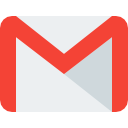In today's fast-paced environment, technology seems to have fundamentally changed our offices in so many amazing ways! We have easy accessibility to platforms that previous generations could only dream of, and we have become more efficient and connected than ever. Genuinely, though, some shortcomings cannot be denied which have affected smooth digital transformation in so many ways. Though technology has upended our potential at work, it has also created a new set of problems that are significant to address.
Sometimes the continual alerts cause you to feel overwhelmed. Maybe trying to keep your staff in agreement across several digital channels. You are most definitely not alone! The upside to this is the fact that as much as technology has created problems, it has also opened up channels to overcome them.
So take your preferred mug of coffee (or tea!), and let's discuss some typical workplace issues in this digital age and investigate how, you got it – tech solutions could save us! Filled with ideas and advice to help you and your team flourish in the digital workplace, we will gently and amiably break it all down.
Communication Overload
Our inboxes are overflowing, instant messaging is pinging nonstop, and then project management alerts follow. It's really extensive. Although digital communication technologies were supposed to simplify things, they have occasionally resulted in a condition of perpetual connectedness that feels more like bombardment than efficiency. The sheer number of emails, texts, and alerts may cause stress, overlook crucial information, and a sense of never quite being "off the clock."
Technology Solution: Unified Platforms & Intelligent Communication Management
The secret here is to become smarter about how we use digital communication rather than completely discounting it—impossible, right? Consider it as turning a wild flood under control.
Consolidated Platforms: Think about using a single communication platform instead of juggling several applications for tasks, texting, and video conferences. These platforms streamline communication and enable you to consolidate all aspects under one digital umbrella, thus reducing the app-switching problem.
Etiquette in Communication Guidelines: Although it sounds basic, establishing clear communication rules inside your team may alter everything. Promote email for less pressing needs, instant messaging for short queries, and video conferences for more complex conversations. Consider setting "quiet hours" when non-urgent alarms are turned off to enable concentrated work.
Smart Filters: Emails are your hidden weapon—smart filtering and prioritising tools! Discover how to program emails to automatically sort, rank senders, and filter noise. Many email platforms and messaging systems also enable you to focus more on communications and recognize key topics, thus empowering you to prioritize on aspects that improve the overall productivity.
Reliable Infrastructure: Not least among all this digital communication is the foundation: a strong and stable network. Imagine attempting to control a tsunami of digital data using a sluggish, erratic connection! You really should be investing in enterprise WiFi solutions. These systems are meant for high-density use, therefore they provide a reliable and fast connection across your company, so your communication tools operate without annoying disruptions. The unsung hero ensuring flawless flow of your digital interactions is dependable WiFi.
Lack of Collaboration
Information silos in the pre-digital era were sometimes physical, with various departments housed apart by walls. These silos can become even more nuanced in the online era, existing in distinct systems, seperate databases, and disconnected digital operations across diverse programs. Teams and departments that cannot readily access and exchange data suffer in cooperation, which results in repeated work, lost opportunities, and slower project completion.
The Tech Solution Is Integrated Systems and Cooperative Platforms
The beauty of digital technology is its capacity for connection; let's use it to tear down those virtual barriers!
Cloud-based Collaboration: Accept cloud-based systems with team workspaces, project management tools, and shared document editing capability. Regardless of their location, these solutions let several individuals work on the same documents concurrently, track project progress clearly, and maintain everyone in the loop.
Project Management Software: From basic task lists to sophisticated Gantt charts, project management software enables visualisation of workflows, assigning of tasks, setting of deadlines, and cooperative tracking of development. This ensures that all team members are aware of their roles and can figure out how their strategies influence the others.
Knowledge Management Systems: Establish a common information base for your firm; see it as your digital library. This may be an internal blog, a wiki, or a specific knowledge base programme. Easy accessibility to data enables team members to recognize solutions independently and reduces the requirement of continuous email searches.
Customer Relationship Management (CRM) Systems: Most of them deal with clients, so a well-run CRM system is quite helpful for companies in such regard. It serves as the core centre for all client contacts, sales records, and past correspondence. Still, occasionally off-the-shelf solutions fall short of the particular requirements of a company. Custom CRM development services find use here as well.
By customising a CRM system especially to your processes and needs, internal cooperation across sales, marketing, and customer care teams can be greatly enhanced, thereby guaranteeing everyone has a 360-degree perspective of the client journey and can operate without problems. A personalised CRM is like a flawlessly fitting garment, just appropriate for your company's needs.
Cybersecurity Risks
The hazards grow as our offices get increasingly digital. Cybersecurity issues affect businesses everywhere, not only of an IT department's concern. Phishing schemes, data breaches, and ransomware attacks may create problems of financial losses, reputational damage, and disturbances in operation. Digital era security of systems and sensitive data is critical.
Robust Security Systems & Staff Training: Tech Solution
Maintaining your digital workplace calls for strong defences and alert guards, much as constructing a digital fortitude!
Cybersecurity Software: Invest in a layered cybersecurity method using complete cybersecurity software. This encompasses antivirus programs, firewall protection, anti-malware, intrusion detection platforms, and endpoint security. Regular updates to these platforms enable one to overcome new vulnerabilities and shortcomings.
Multi-Factor Authentication: Apply MFA for every important system and account. This greatly makes it more difficult for illegal users to obtain access even if credentials are hacked as it adds a degree of protection beyond only passwords.
Frequent Penetration Testing and Security Audits: Not just arrange your defences and ignore them! Frequent security system audits help you find gaps in your defences using ethical hacking, therefore simulating real-world assaults.
Staff Cybersecurity Training: First line of protection for you is your staff. Consistently train them on best practices of cybersecurity, including how to identify phishing attempts, creating robust passwords, and securely managing confidential data, and spot questionable behavior. Often the weakest point in cybersecurity is human mistake, hence arming your staff with information is vital.
Digital Exhaustion & Workload Management
Although technology is meant to simplify our lives, the always-on character of the digital office can compromise employee welfare. Digital weariness, burnout, and lower job satisfaction can result from constant screen usage, unrelenting alerts, and blurring of the borders separating work from personal life. Ignoring the human element in our digital revolution is a surefire path for long-term issues.
Wellbeing Technology and Mindful Digital Practices: Tech Solution
Let us employ technology to advance welfare and establish a better digital workplace.
Wellness Apps: Encourage the use of wellness applications that support mindfulness, meditation, and daily breaks using the wellbeing. Certain applications even interact with calendars to recommend quick breaks and movement cues.
Ergonomic Tech: Ensure ergonomic workplaces and give staff members relevant platforms useful for minimizing physical strain. This includes monitor stands, mouse, adjustable sitting places, and ergonomic keywords. Solid ergonomics greatly aid in reducing physical pain and tiredness associated with an extended period of computer utilization.
Tools for Productivity and Time Management: Investigate productivity tools such as Pomodoro clocks with built-in break reminders, internet blocks to cut distractions, and task prioritising techniques to help with overwhelm that support concentration and wellbeing.
Promote Offline Time: Encourage staff members to deliberately unplug outside of business hours and even during breaks—digital detox and " Offline" time. Plan "digital-free" periods or sessions for concentrated work free from digital disruptions. Crucially, one should lead by example and create a culture that supports work-life balance.
Legacy Systems & Integration Challenges
Many companies run with a combination of more recent digital technologies and ancient systems. Frequent poor communication between these different systems results in data silos, ineffective processes, and manual data entry—all of which impede output and cause annoyance. A simplified digital workplace depends on old and new technology being bridged.
Modernising Tech Solutions: System Integration
It's time for your digital tools to play well together and modernise your systems.
Solutions of System Integration: Take a look at relevant solutions that can link your diverse systems so that information can move smoothly without any disruptions. This might create the requirement for APIs (Application Programming Interfaces), middleware, or specialized integration platforms. Integration streamlines processes across numerous applications and several departments, reducing information discrepancies, and minimizing manual entry of data.
Cloud Migration: Modernising obsolete apps and moving old systems to the cloud should be something you give thought to. Generally more flexible, scalable, and simpler to integrate than many older on-site systems are cloud-based technologies. Digitizing might involve re-architecting ongoing programs to adjust present demands better or substituting more efficient or advanced software for obsolete systems.
Business Intelligence and Data Warehousing (BI): Create a data repository to centralize data collated from diverse systems and implement BI platform to assess and visualize the data. This provides a complete picture of your company’s processes, giving support to data-based decision making, and pointing out areas for performance and improvements in efficiency.









